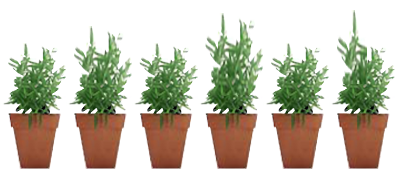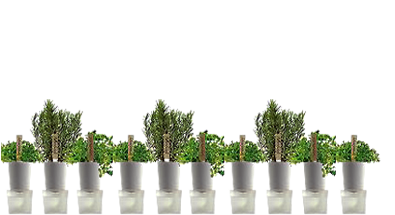
Planting your own garden is a great way to learn about where food comes from and how plants grow. Ever wonder what was the first food planted? How did people discover that seeds grew into fruit producing plants that were edible? Following the steps below will guide you through the planting process and caring for your plant.
How does YOUR garden grow?
Activity 1 – Planting Seeds

Planting a garden is a great way to learn about where food comes from and how plants grow. Following the steps below will guide you through the seed planting process and help you care for your plants. First, check the growing season by looking at this map. Next, check what edible plants grow in your region. Third, research where you can purchase seeds. When you know what you can plant and when, it is time to find out where you will plant your edible garden! Seeds can sprout and grow inside your home as well, on a windowsill. Choose a sill that gets at least 4-6 hours of sunshine a day. Plant your seeds outside in a sunny garden area. Many people start seeds indoors and then move them outdoors. You will need potting soil and small seed containers. An egg carton or seed starting sheet works well. Follow the instructions on the seed packet for depth of planting and spacing. Label what you have planted! Sprinkle with water daily. When seeds are a few inches tall, and it is warm enough, you can move your plants outside or harvest them for dinner! Be sure to take a picture of them!
Activity 2 – Record your garden’s growth

Each week measure your plants with a ruler. Visually record the plants’ growth by creating a bar graph.
When your plants are ready to harvest, follow the links on the final page to find ways to use your locally grown foods in a meal. Sit down and share this meal with a friend, family member, or classmate.
Watch it grow!
Activity 3 – grow an herb garden

Herbs are plants that flavor our food, cure our ailments, and keep us smelling sweet! Herbs were always an important part of a garden. You can grow herbs indoors on a windowsill. Parsley, chives, thyme, rosemary, sage, marjoram, cilantro, and basil are the easiest to grow. Find a container that is the recommended size for your plant choice. A great place to start is with herbs like basil or oregano. Most can be grown inside and are fairly low maintenance.
Fill the container with nutrient rich soil. Then use your finger to gently make impressions in the soil for the seeds. Place one seed in each hole and cover with soil. Water and place container in a sunny spot.
Follow the directions on your seed packet to provide your plant with the right amount of water and sunlight. Soon your plants will begin to emerge from the soil. When they reach maturity, they will add zest to the taste of your dishes! IN colder seasons the herbs can continue to grow on a sunny window sill.
Spice up your life!
Activity 4 – Uses for Herbs

Pick your favorite herbs. Research their origins in the library or online. Who used this herb first? How is the herb thought to affect our health? Which herb is good for your stomach? Which herbs soothe our nerves? Which herbs have vitamin C? Did you know that parsley has more iron than any other green vegetable? Did you know that dandelions can help clean your liver?!!! Echinacea is thought to help sore throats. Ginger root can help stimulate the circulation system. Lavender relaxes us. Herbs not only help our food and drinks taste better, they also help our health in many ways. Make a chart of at least ten different herbs and their uses.
Pick your favorite herb and grow it!
Activity 5 – Global Food Distribution
Most people living in cities assume the food is secured from grocery stores without fully understanding dependency on ten huge corporations who control the global food industry. 46% of London’s carbon footprint is from food transport! In 1989, 52% of Cuba’s food supply was transported from the Soviet Union. When it broke apart, Cuba had to become food resilient. Cities unknowingly are ignorant of food security and need to return to producing local crops to safeguard food supplies. Take a look at OXFAM’s 10 companies that control the world’s food distribution. Make a chart of their annual income. Then look at Food, Climate, Natural Resources. List three steps individuals can take to start governmental change in the way food is distributed around the world. Add these to your chart.
Review

- Plants that flavor our food are called:
- You can grow herbs inside year-round on a window sill.
- Lavender helps to stimulate our circulation system.
- Parsley has more iron than any other green vegetable.
Explore
- Added Value
- eeBLUE AQUACULTURE
- FOOD Processing Top 100
- Garden Genetics Teacher PDF
- Grow an Herb Garden
- History of Food Timeline
- Homegrown Minneapolis
- LifeLab: Science Garden Exploration
- Medicinal Guide to Herbs
- Milestones in U.S.Food and Drug Law
- OXFAM Growing A Better Future
- Plant a Vegetable Garden
- Planting Science
- ROOTED
- Slow Food
- SPIN Turn your lawn into a vegetable garden
- SPREAD's Robotic Farm
- TEDed Underwater Farms & Climate Change
- The Roof Crop
- Urban Eating For Urban Eden
- Urban Permaculture
- Vegetable Grow Guides
- Video Eat Real Eat Local Canada
- Vienna Vegetable Orchestra
- Wageningen University, Netherlands
- WWOOF
- Your Food Environment Atlas


















































